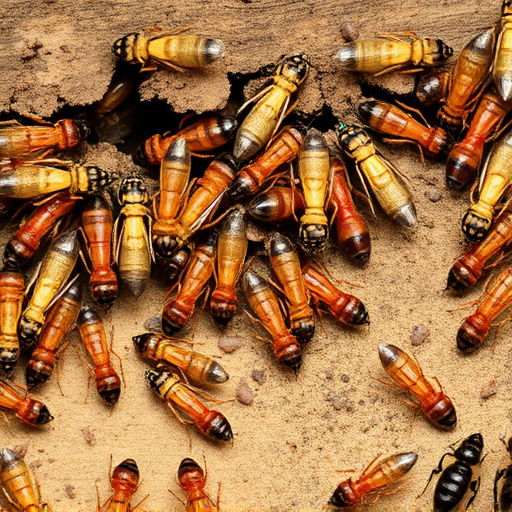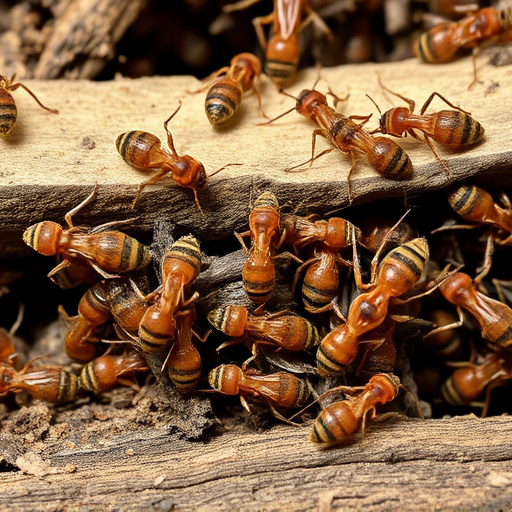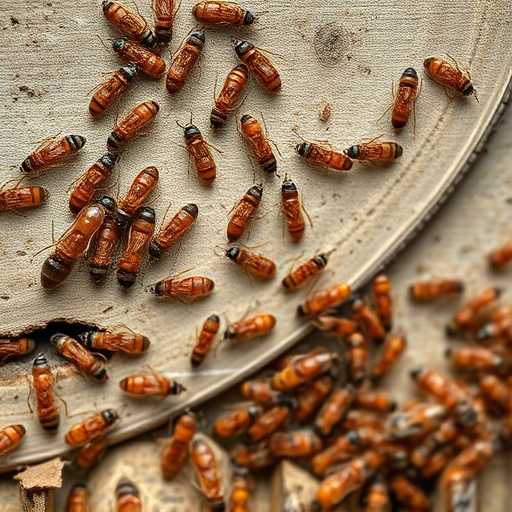In arid Vail, Arizona, termites are both ecosystem contributors and property threats. Western Subterranean and Desert Drywood termites are common, requiring early detection through regular inspections. Formosan termites, an invasive species, pose a significant risk due to their aggressive feeding habits. Effective termite control in Vail AZ involves chemical and non-chemical treatments, regular inspections, and seasonal vigilance to prevent extensive structural damage from these persistent pests.
“Exploring the diverse termite landscape of Vail, AZ, is essential for homeowners and businesses aiming to safeguard their properties. This comprehensive guide delves into the four primary termite species plaguing the region: Subterranean, Drywood, Formosan, and their lesser-known counterparts. Understanding their unique behaviors, habitats, and signs of infestation is crucial for effective prevention and control. With seasonal considerations in mind, this article offers valuable insights into termite control methods tailored to Vail’s specific needs.”
- Understanding Termites in Vail, AZ: Common Species Identification
- Subterranean Termites: Behavior and Habitat in the Vail Region
- Drywood Termites: Unique Characteristics and Infestation Signs
- Formosan Termites: A Serious Threat to Properties in Vail
- Effective Termite Control Methods for Vail Homes and Businesses
- Seasonal Considerations for Termite Prevention in North Arizona
Understanding Termites in Vail, AZ: Common Species Identification
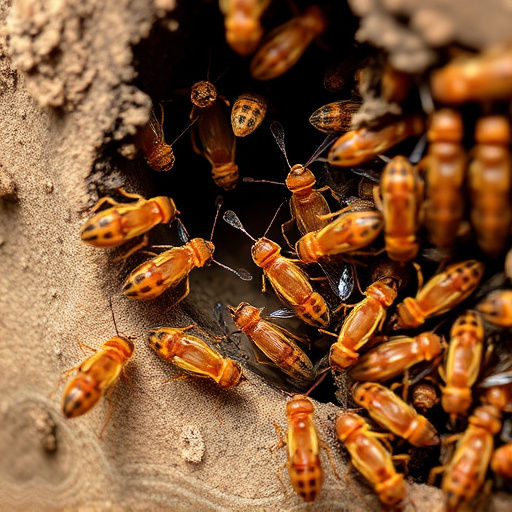
In the warm, arid climate of Vail, Arizona, termites play a unique role in the local ecosystem. Understanding these insects is crucial for anyone considering termite control Vail AZ services. Two of the most common species found in this area are the Western Subterranean Termite and the Desert Drywood Termite. The Western Subterranean Termite, often referred to as the “subterfuge invader,” lives underground, building extensive tunnel systems that can go unnoticed until significant damage occurs. They feed on cellulose-rich materials, making wood products in your home a potential target.
On the other hand, Desert Drywood Termites are less dependent on soil and moisture, allowing them to inhabit wooden structures above ground level. Unlike their subterranean counterparts, they create nests inside wooden material, often in furniture or structural beams. Identifying these termites early is vital for effective termite control Vail AZ residents can rely on. Regular inspections by professionals specializing in local termite species can help detect infestations before they cause substantial harm.
Subterranean Termites: Behavior and Habitat in the Vail Region
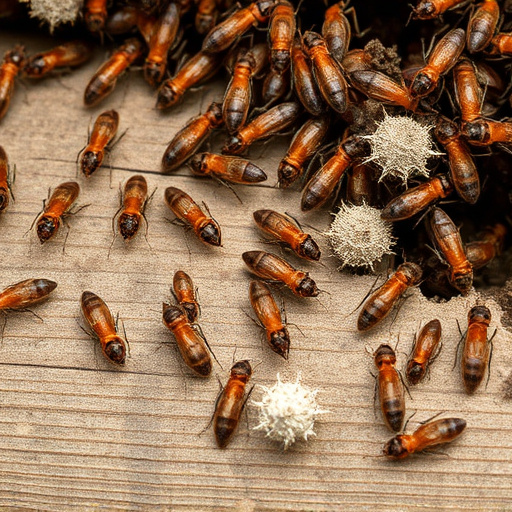
In the Vail, Arizona region, one of the most prevalent types of termites is the subterranean variety. These social insects live in complex colony networks beneath the ground, which provides them with optimal conditions for survival and proliferation. They construct intricate tunnel systems that expand continuously as their colonies grow. This habitat allows them to access abundant wood sources throughout buildings and structures without being directly exposed to predators or environmental stressors.
Subterranean termites are highly organized and efficient in their behavior. Worker termites forage for food, establishing feeding trails along which they travel regularly. They prefer moist environments, often found in areas with poor drainage or near water sources. In the Vail area, where climate conditions can vary, these termites adapt by finding moisture within wood, drywall, and other cellulose-based materials in homes and commercial buildings. Termite control in Vail AZ is essential to mitigate their presence, as professional interventions are crucial for protecting structures from extensive damage caused by these persistent pests.
Drywood Termites: Unique Characteristics and Infestation Signs

Drywood termites are a common pest in the Vail, AZ area, known for their unique behavior and less visible presence compared to other termite species. Unlike their cousins, drywood termites don’t require constant moisture, hence their name, as they can thrive in drier environments. They primarily feed on wood that’s above ground level, often infesting structural timbers, furniture, and even wooden decorative items. One of their distinct characteristics is the creation of small, round holes in wood, with fine sawdust-like particles nearby, indicating their activity.
To identify a drywood termite infestation, look for signs like wood that appears shaved or grooved, as these termites chew parallel to the grain. You might also notice the presence of their tiny, white eggshells or small, dead insect fragments (termite frass) in the affected areas. Early detection is crucial for effective termite control in Vail AZ, so regular inspections are recommended, especially if you live in an area known for these pests. Prompt action can prevent extensive damage to your property.
Formosan Termites: A Serious Threat to Properties in Vail
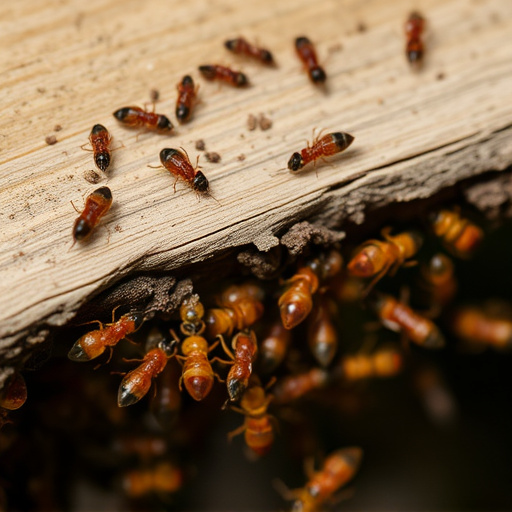
Formosan termites are a significant concern for property owners in the Vail, AZ area. Originating from Asia, this invasive species has become one of the most destructive pests in the region. They pose a serious threat to homes and structures due to their aggressive feeding habits and ability to quickly establish large colonies. Unlike native termite species, Formosan termites don’t need much moisture to survive, making them particularly adept at thriving in Arizona’s arid climate.
Their relentless appetite for wood and cellulose means they can cause extensive damage if left unchecked. Termite control in Vail AZ is crucial to mitigate the risk of infestations. Professional services employ specialized treatments and monitoring programs to protect homes. These methods aim to detect and eliminate Formosan termites early, preventing costly repairs and ensuring the structural integrity of properties in the area.
Effective Termite Control Methods for Vail Homes and Businesses

In the Vail, AZ area, where termites are prevalent, effective termite control is crucial for both homes and businesses to protect their structures from potential damage. One of the most common methods involves chemical treatments, such as applying termiticides around the perimeter of buildings. These products create a barrier that repels termites and prevents infestations. It’s important to note that professionals should conduct regular inspections to identify any signs of termite activity and apply the appropriate treatment plans.
In addition to chemical treatments, there are non-chemical options available for termite control in Vail. One such method is baiting systems, where a substance attractive to termites is placed in strategic locations. Once the termites consume the bait, it slowly eliminates them over time without harming surrounding areas. Another eco-friendly approach is biological control, utilizing natural predators like fungi or nematodes to target and reduce termite populations. Termite control Vail AZ requires a comprehensive strategy tailored to each property’s unique needs to ensure long-lasting protection.
Seasonal Considerations for Termite Prevention in North Arizona
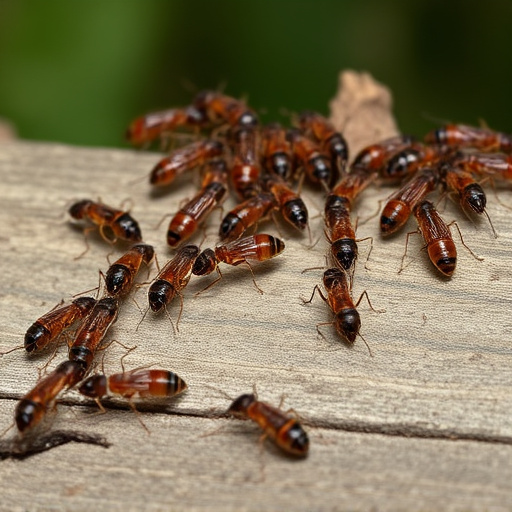
In North Arizona, including the Vail area, termites can be an annual concern for homeowners due to the region’s unique climate and environmental factors. Seasonal considerations play a significant role in effective termite prevention. During the spring and early summer months, termite activity tends to peak as these insects emerge from their winter dormancy. This period requires heightened vigilance as termites are most active during this time, searching for new food sources. One crucial aspect of termite control in Vail AZ is understanding that moisture management is key. Termites are drawn to areas with high humidity, so addressing any potential water leaks or sources of excess moisture around the property is essential. Regular inspections by professionals can help identify any early signs of an infestation, allowing for prompt treatment.
As summer transitions into fall, the focus should shift towards sealing entry points and gaps in walls, foundations, and wooden structures. Termites can infiltrate through even the smallest cracks, so ensuring these areas are well-sealed prevents easy access for the insects. Winter offers a temporary respite but serves as a crucial planning phase for termite control. Maintaining a well-trimmed lawn and removing any dead wood or debris nearby can significantly deter termites from establishing colonies. Additionally, keeping an eye on outdoor fires and ensuring they are completely extinguished after use is essential, as embers can provide a hidden entry point for these pests. Regular termite treatments by professionals during these key seasons can ensure long-term protection for homes in the Vail area.
Vail, AZ, residents and businesses must stay vigilant against termites due to the presence of various species like subterranean and Formosan termites. Understanding their unique behaviors and habitats is crucial for effective prevention and timely intervention. Implementing robust termite control methods tailored to the local climate is essential to protect properties year-round. By combining professional treatments with seasonal precautions, you can safeguard your investment from these persistent pests, ensuring a peaceful and pest-free environment in the Vail area. Remember, proactive measures are key when it comes to termite control in Vail AZ.

